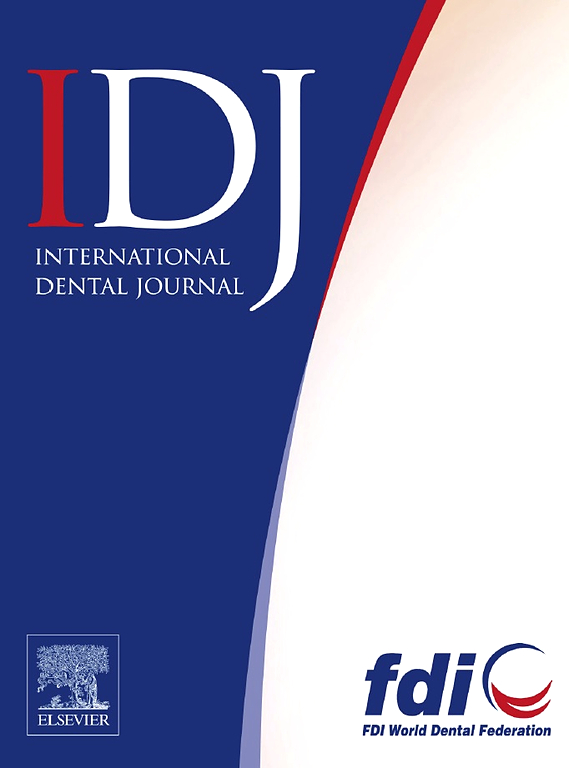Pexidartinib Inhibits Macrophage Senescence Through Glycolysis in Periodontitis Microenvironment
IF 3.2
3区 医学
Q1 DENTISTRY, ORAL SURGERY & MEDICINE
引用次数: 0
Abstract
Objectives
Periodontitis, a chronic inflammatory condition, is caused by complex interactions between periodontopathic bacteria and the local innate immune response. Macrophage senescence, a pivotal contributor to immune dysfunction, has been implicated in periodontitis progression. This research was conducted to clarify how macrophage senescence and glycolysis interact within the periodontal inflammatory microenvironment. Specifically, we investigated whether pexidartinib (PLX3397), known for inhibiting the colony-stimulating factor-1 receptor (CSF-1R), could mitigate macrophage senescence by modulating glycolytic activity, thereby attenuating periodontal inflammation.
Methods
We first constructed the experiential periodontitis mouse model. The alveolar bone volume was quantified using Micro-CT, while the periodontal ligament width and the distance from the cementoenamel junction (CEJ) to the alveolar bone crest (ABC) were evaluated using HE staining. The expression levels of macrophage senescence markers, glycolysis-related indicators, and CSF-1R in gingival tissues were assessed by immunofluorescence staining. For in vitro studies, Senescence was induced in RAW264.7 cells by stimulating them with Porphyromonas gingivalis lipopolysaccharide (Pg-LPS) with or without pretreatment of PLX3397 and glycolysis modulators. Cellular senescence rates were evaluated using Senescence-associated β-Galactosidase (SA-β-Gal) staining. The presence of markers indicating senescence, CSF-1R, and glycolysis-related indicators was further analysed by RT-qPCR and Western blotting.
Results
The gingival tissues of mice with periodontitis showed elevated senescent macrophages, which correlated with higher CSF-1R expression and glycolytic activity. Similarly, in Pg-LPS-treated RAW264.7 macrophages, senescence markers were upregulated alongside CSF-1R and glycolysis-related indicators. Meanwhile, modulating glycolysis in vitro directly influences senescence indicators. And PLX3397 treatment reduced glycolytic activity, leading to an improvement in macrophage senescence.
Conclusion
Our findings indicate that PLX3397 alleviates periodontal tissue inflammation by inhibiting macrophage senescence via glycolytic modulation, offering potential for immune-regulatory therapies in periodontitis management.
培西达替尼通过糖酵解抑制牙周炎微环境中巨噬细胞衰老
目的牙周炎是一种慢性炎症,由牙周病细菌与局部先天免疫反应复杂的相互作用引起。巨噬细胞衰老是免疫功能障碍的关键因素,与牙周炎的进展有关。本研究旨在阐明巨噬细胞衰老和糖酵解如何在牙周炎症微环境中相互作用。具体来说,我们研究了培西达替尼(PLX3397)是否可以通过调节糖酵解活性来减轻巨噬细胞衰老,从而减轻牙周炎症,因为培西达替尼可以抑制集落刺激因子-1受体(CSF-1R)。方法首先建立实验性牙周炎小鼠模型。Micro-CT量化牙槽骨体积,HE染色评估牙周韧带宽度和牙骨质连接(CEJ)到牙槽骨嵴(ABC)的距离。免疫荧光染色检测牙龈组织中巨噬细胞衰老标志物、糖酵解相关指标及CSF-1R的表达水平。在体外研究中,分别用或不加PLX3397和糖酵解调节剂预处理的牙龈卟啉单胞菌脂多糖(Pg-LPS)刺激RAW264.7细胞诱导衰老。采用衰老相关β-半乳糖苷酶(SA-β-Gal)染色评估细胞衰老率。通过RT-qPCR和Western blotting进一步分析衰老标志物、CSF-1R和糖酵解相关指标的存在。结果牙周炎小鼠牙龈组织中衰老巨噬细胞升高,与CSF-1R表达和糖酵解活性升高有关。同样,在pg - lps处理的RAW264.7巨噬细胞中,衰老标志物与CSF-1R和糖酵解相关指标一起上调。同时,体外调节糖酵解直接影响衰老指标。PLX3397治疗降低了糖酵解活性,导致巨噬细胞衰老的改善。结论PLX3397通过糖酵解调节抑制巨噬细胞衰老,从而缓解牙周组织炎症,为牙周炎治疗提供了免疫调节疗法的潜力。
本文章由计算机程序翻译,如有差异,请以英文原文为准。
求助全文
约1分钟内获得全文
求助全文
来源期刊

International dental journal
医学-牙科与口腔外科
CiteScore
4.80
自引率
6.10%
发文量
159
审稿时长
63 days
期刊介绍:
The International Dental Journal features peer-reviewed, scientific articles relevant to international oral health issues, as well as practical, informative articles aimed at clinicians.
 求助内容:
求助内容: 应助结果提醒方式:
应助结果提醒方式:


